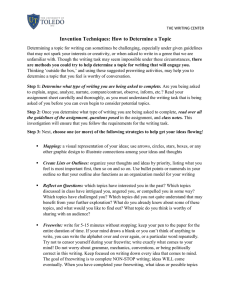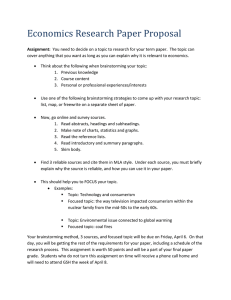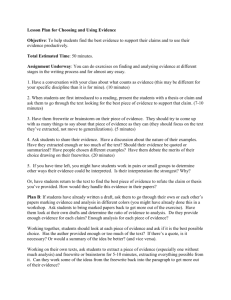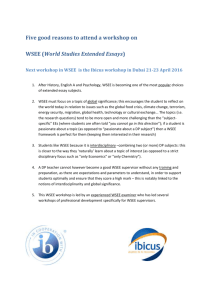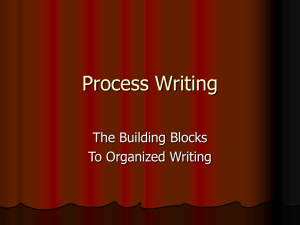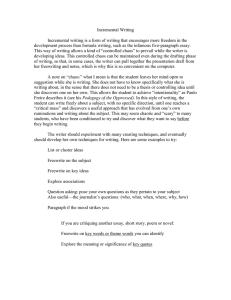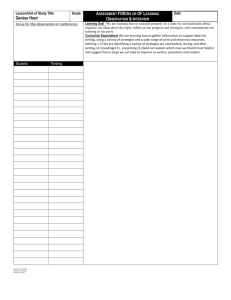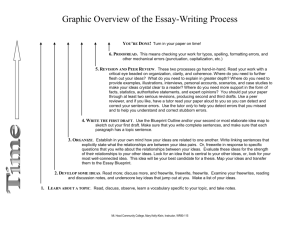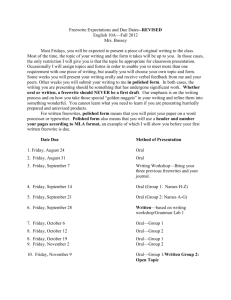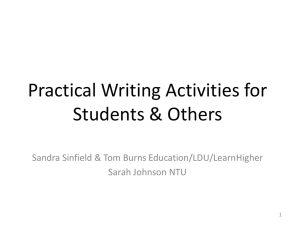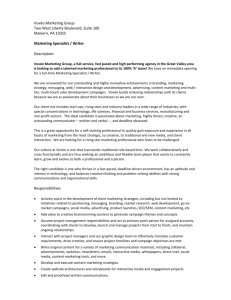Brainstorming Techniques
advertisement
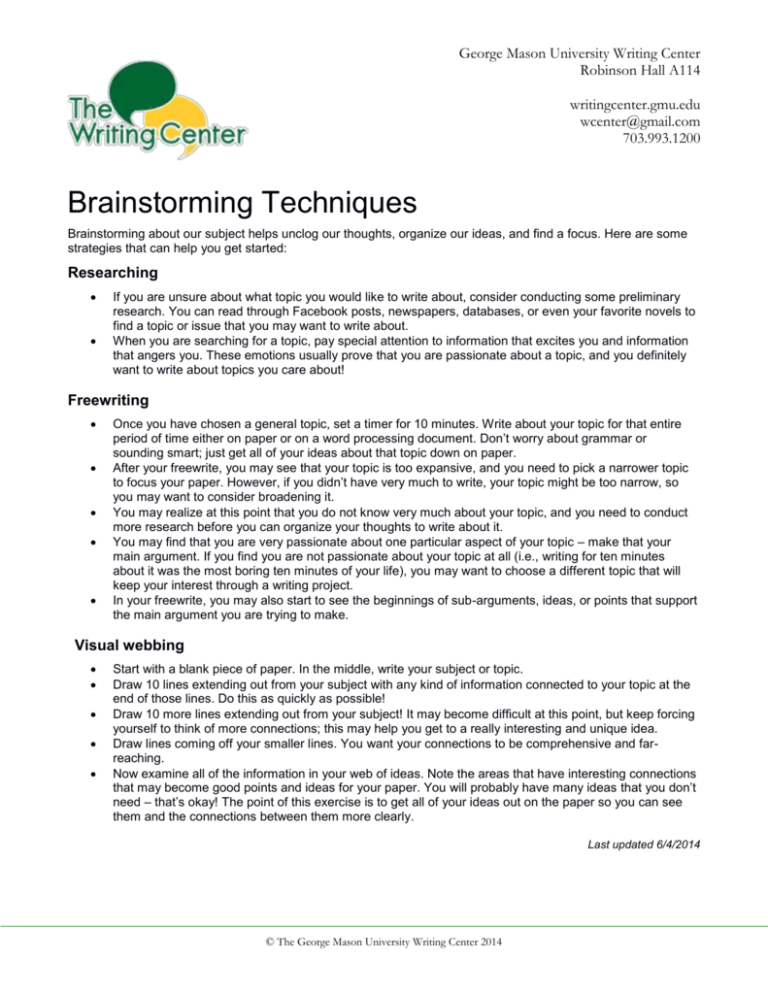
George Mason University Writing Center Robinson Hall A114 writingcenter.gmu.edu wcenter@gmail.com 703.993.1200 Brainstorming Techniques Brainstorming about our subject helps unclog our thoughts, organize our ideas, and find a focus. Here are some strategies that can help you get started: Researching If you are unsure about what topic you would like to write about, consider conducting some preliminary research. You can read through Facebook posts, newspapers, databases, or even your favorite novels to find a topic or issue that you may want to write about. When you are searching for a topic, pay special attention to information that excites you and information that angers you. These emotions usually prove that you are passionate about a topic, and you definitely want to write about topics you care about! Freewriting Once you have chosen a general topic, set a timer for 10 minutes. Write about your topic for that entire period of time either on paper or on a word processing document. Don’t worry about grammar or sounding smart; just get all of your ideas about that topic down on paper. After your freewrite, you may see that your topic is too expansive, and you need to pick a narrower topic to focus your paper. However, if you didn’t have very much to write, your topic might be too narrow, so you may want to consider broadening it. You may realize at this point that you do not know very much about your topic, and you need to conduct more research before you can organize your thoughts to write about it. You may find that you are very passionate about one particular aspect of your topic – make that your main argument. If you find you are not passionate about your topic at all (i.e., writing for ten minutes about it was the most boring ten minutes of your life), you may want to choose a different topic that will keep your interest through a writing project. In your freewrite, you may also start to see the beginnings of sub-arguments, ideas, or points that support the main argument you are trying to make. Visual webbing Start with a blank piece of paper. In the middle, write your subject or topic. Draw 10 lines extending out from your subject with any kind of information connected to your topic at the end of those lines. Do this as quickly as possible! Draw 10 more lines extending out from your subject! It may become difficult at this point, but keep forcing yourself to think of more connections; this may help you get to a really interesting and unique idea. Draw lines coming off your smaller lines. You want your connections to be comprehensive and farreaching. Now examine all of the information in your web of ideas. Note the areas that have interesting connections that may become good points and ideas for your paper. You will probably have many ideas that you don’t need – that’s okay! The point of this exercise is to get all of your ideas out on the paper so you can see them and the connections between them more clearly. Last updated 6/4/2014 © The George Mason University Writing Center 2014
